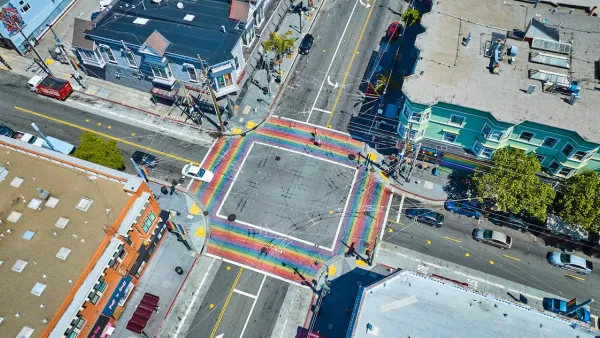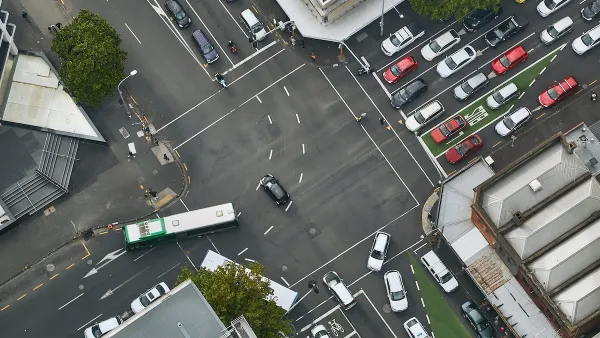Traffic signs on American roadways are so numerous and so distracting to drivers that they are having the opposite effect intended, writes John Staddon.
"Consider the stop sign. It seems innocuous enough; we do need to stop from time to time. But think about how the signs are actually set up and used. For one thing, there's the placement of the signs-off to the side of the road, often amid trees, parked cars, and other road signs; rarely right in front of the driver, where he or she should be looking.
Then there's the sheer number of them. They sit at almost every intersection in most American neighborhoods. In some, every intersection seems to have a four-way stop. Stop signs are costly to drivers and bad for the environment: stop/start driving uses more gas, and vehicles pollute most when starting up from rest. More to the point, however, the overabundance of stop signs teaches drivers to be less observant of cross traffic and to exercise less judgment when driving-instead, they look for signs and drive according to what the signs tell them to do."
"A particularly vexing aspect of the U.S. policy is that speed limits seem to be enforced more when speeding is safe. A more systematic effort to train drivers to ignore road conditions can hardly be imagined. By training drivers to drive according to the signs rather than their judgment in great conditions, the American system also subtly encourages them to rely on the signs rather than judgment in poor conditions, when merely following the signs would be dangerous.
So what am I suggesting-abolishing signs and rules? A traffic free-for-all? Actually, I wouldn't be the first to suggest that. A few European towns and neighborhoods-Drachten in Holland, fashionable Kensington High Street in London, Prince Charles's village of Poundbury, and a few others-have even gone ahead and tried it. They've taken the apparently drastic step of eliminating traffic control more or less completely in a few high-traffic and pedestrian-dense areas. The intention is to create environments in which everyone is more focused, more cautious, and more considerate. Stop signs, stoplights, even sidewalks are mostly gone. The results, by all accounts, have been excellent: pedestrian accidents have been reduced by 40 percent or more in some places, and traffic flows no more slowly than before."
FULL STORY: Distracting Miss Daisy

Maui's Vacation Rental Debate Turns Ugly
Verbal attacks, misinformation campaigns and fistfights plague a high-stakes debate to convert thousands of vacation rentals into long-term housing.

Planetizen Federal Action Tracker
A weekly monitor of how Trump’s orders and actions are impacting planners and planning in America.

In Urban Planning, AI Prompting Could be the New Design Thinking
Creativity has long been key to great urban design. What if we see AI as our new creative partner?

King County Supportive Housing Program Offers Hope for Unhoused Residents
The county is taking a ‘Housing First’ approach that prioritizes getting people into housing, then offering wraparound supportive services.

Researchers Use AI to Get Clearer Picture of US Housing
Analysts are using artificial intelligence to supercharge their research by allowing them to comb through data faster. Though these AI tools can be error prone, they save time and housing researchers are optimistic about the future.

Making Shared Micromobility More Inclusive
Cities and shared mobility system operators can do more to include people with disabilities in planning and operations, per a new report.
Urban Design for Planners 1: Software Tools
This six-course series explores essential urban design concepts using open source software and equips planners with the tools they need to participate fully in the urban design process.
Planning for Universal Design
Learn the tools for implementing Universal Design in planning regulations.
planning NEXT
Appalachian Highlands Housing Partners
Mpact (founded as Rail~Volution)
City of Camden Redevelopment Agency
City of Astoria
City of Portland
City of Laramie





























